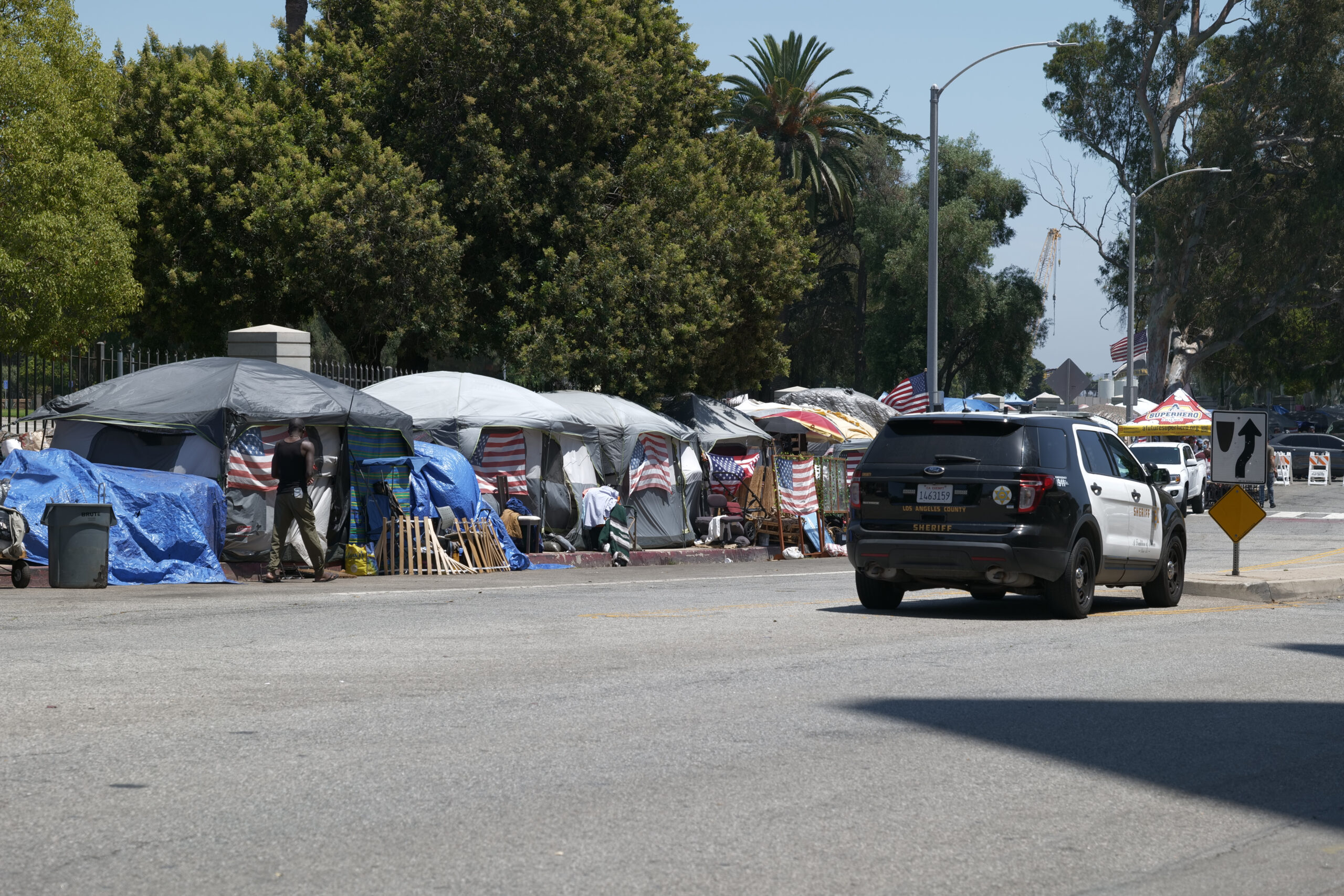Case v. Montana and Police Responses to Mental Health Calls
On Sept. 27, 2021, Army veteran William Case became one of many Americans shot by police while experiencing a mental health crisis.

Published
Author
Share
On Sept. 27, 2021, Army veteran William Case became one of many Americans shot by police while experiencing a mental health crisis.
Acting on information that Case was suicidal, officers forcibly entered his Montana residence without a search warrant and shot him. Case was later charged and convicted of assault for pointing his gun at one of the officers. As part of an appeal of his assault conviction, Case argues that the police’s entry violated his Fourth Amendment rights. The Supreme Court will consider Case’s claims when it holds oral arguments in Case v. Montana tomorrow.
The Core Legal Question
The Supreme Court will have to decide whether police can enter a home without a warrant based only on “reasonable suspicion” that an emergency is ongoing in the residence. Reasonable suspicion is a lower standard of proof than the “probable cause” normally required under the Fourth Amendment to receive a search warrant. Thus, the Supreme Court will confront issues arising as police are increasingly the first and only responders to mental health crises.
The Empirical Reality of Police Responses to Mental Health Crises
The uptick in police responses to mental health calls corresponds with an increase in mental health crises generally. Because of our overburdened mental health care system, police are called to address problems that are, at their core, psychiatric.
Contrary to the pervasive myth that most individuals with serious mental illnesses are likely to be violent, we know that people with severe mental illnesses are more than 10 times more likely to be victims of a violent crime than the general population, not perpetrators. Thus, a police response is not necessarily the most appropriate solution to a mental health crisis. Furthermore, officers frequently express frustration at how little training they receive on mental health-related issues, especially compared to the large amount of time they spend responding to mental health calls.
As the American Psychological Association (APA) brief argues, the resulting system increases the risk of harm for both police and those they are called to assist. Startlingly, a study by the Johns Hopkins Center for Gun Violence Solutions and Vanderbilt University found that “calls to police to check on the well-being of individuals were 74 percent more likely to be associated with fatal injury than police responses to an incident where shots had already been fired.”
An Evidence-Based Approach to Case v. Montana
The standard of proof for warrantless entries that the Supreme Court endorses in Case v. Montana will apply regardless of whether jurisdictions adopt a police-dominated approach or an alternative one that incorporates mental health professionals in police responses. I do not address here the ongoing debate about if and how police should respond to mental health calls, and I believe the empirical research is yet unclear about the effectiveness of alternative responses (such as Crisis Intervention Teams). However, given the current evidence before it, I believe the Supreme Court should hesitate to endorse a lower standard of proof for warrantless entries in Case v. Montana.
The State of Montana’s request for a lower standard of proof to conduct warrantless entries into a home during suspected mental health emergencies conflicts with the empirical reality of what happens when police respond to these crises. Requiring a higher standard of proof best protects personal liberty and the safety of all involved.
Justifying Exceptions to the Fourth Amendment’s Warrant Requirement
Prior Supreme Court precedents recognizing exceptions to the Fourth Amendment’s warrant requirement have focused on allowing police to take steps to protect their own safety. In deciding the standard of proof needed for officers to conduct a warrantless entry into a home during suspected emergencies, the Supreme Court will likely balance the liberty interests of residents against safety concerns for responding officers.
In Case v. Montana, the State of Montana specifically relies on the “emergency aid exception” to the warrant requirement, which enables police to prevent serious injury or death by entering homes to aid someone who needs immediate help. However, the findings discussed in the APA brief undermine the main rationale the Court has offered for this exception, which is ensuring that law enforcement can respond safely and effectively to emergencies.
A Safer, More Effective Approach
The Supreme Court can and should uphold a more protective probable cause standard to enter homes in emergency circumstances. Doing so will encourage safer, more effective police action. This standard will require law enforcement to gather more information about an unfolding situation before they can enter a person’s residence, preventing the rush to an early conclusion that results in many adverse outcomes.
Notably, the police who entered William Case’s residence seemed to recognize the value of a more contemplative approach; they waited approximately 40 minutes after arriving on scene to enter Case’s residence. Why? In part, the officers feared Case was attempting a “suicide by cop” (as he had reportedly attempted before) and that police intervention would escalate the situation, putting all parties involved in greater danger.
A Question of Liberty and Safety
A decision by the Court allowing officers to enter a residence with mere reasonable suspicion about an ongoing emergency may deter future officers from taking the cautious and ultimately safer approach. Warrantless entries based on reasonable suspicion not only risk undermining the Fourth Amendment “right of the people to be secure in their… houses… against unreasonable searches and seizures” but also encourage practices that often fail to protect people at their most vulnerable as well as those tasked with guarding them.
Benjamin Franklin once quipped that “[those] who can give up essential liberty to obtain a little temporary safety, deserve neither liberty nor safety.” In deciding Case v. Montana, I hope the Supreme Court seriously considers the flaws in police responses to mental health crises before accepting an argument that will narrow the fundamental, constitutional right to be free from unjustified government intrusion into our homes. Otherwise, we risk giving up an essential liberty without obtaining any greater safety.


